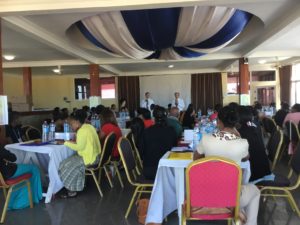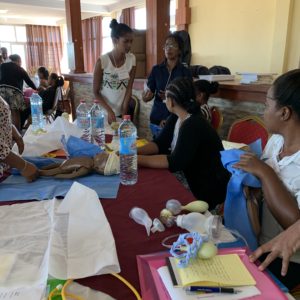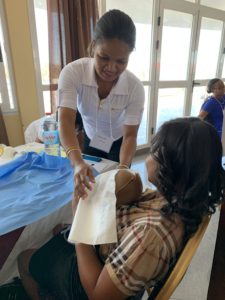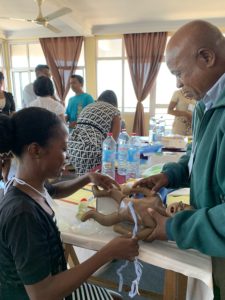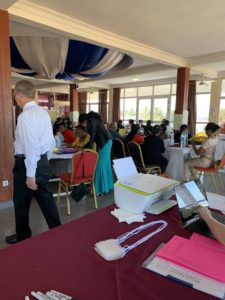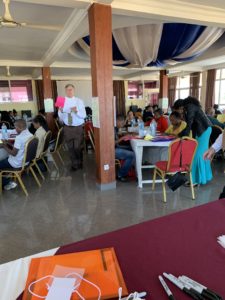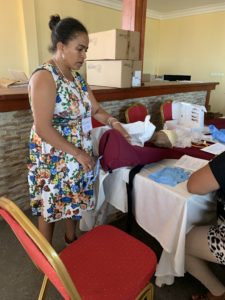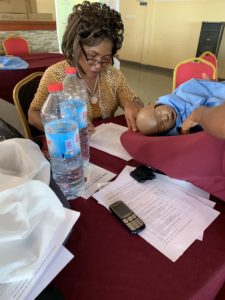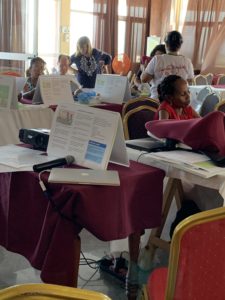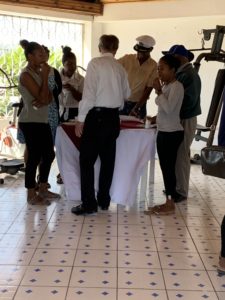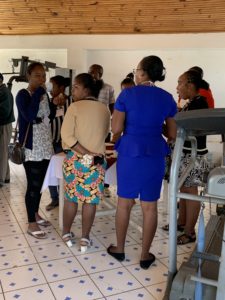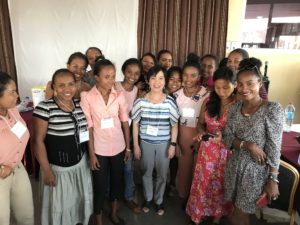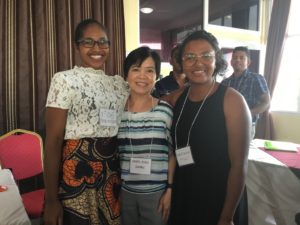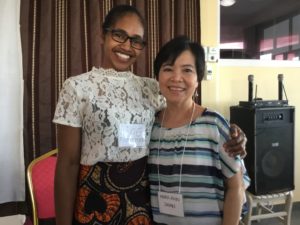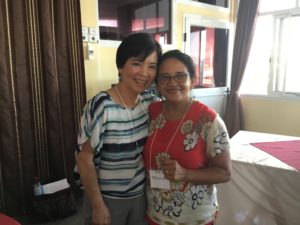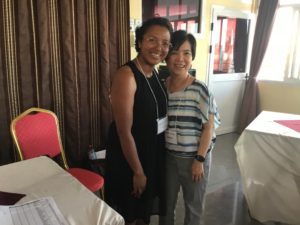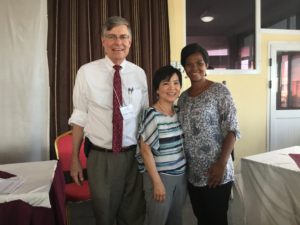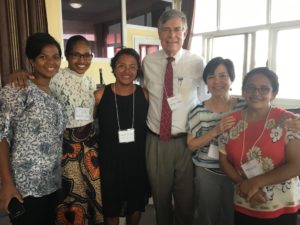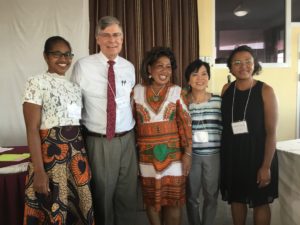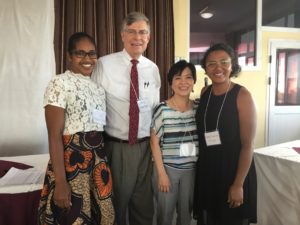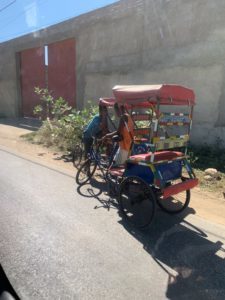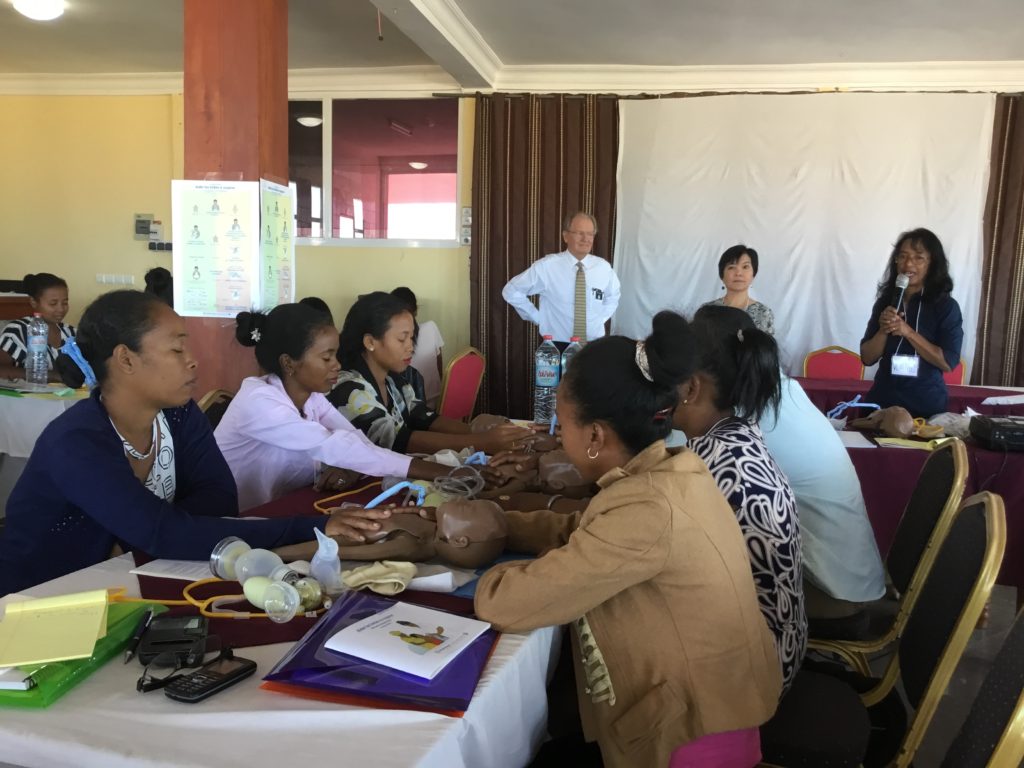
My trip to Madagascar was with the LDS Charities for the humanitarian Maternal/Neonatal project. It is a program called Helping Mothers Survive (HMS) and Helping Babies Breathe (HBB). The program started at John Hopkins and all training materials can be found at jhpiego.org.
It consists of a training course for the local healthcare professionals (doctors, midwives, birth attendants) to learn neonatal resuscitative skills along with maternal care during obstetrical emergencies. Attendees were given resources and equipment to train their colleagues so the training can reach larger number of people and have a greater impact. This program is co-sponsored with UNICEF around the world to helping mothers and babies survive. HMS/HBB just celebrated a 50,000th birthday where UNICEF had done studies that showed, in the countries where the program was taught and implemented, the maternal and neonatal mortality rates have decreased by 50%.
In Toliara, we had 10 master trainers for the first 2 days of the course and about 60 more trainees came in the last 3 days. The master trainers conducted the classes the last 3 days of the course with our assistance and we encouraged the participants to take turn teaching so they will feel more confident when they return to their rural clinics and train their colleagues.
The majority of the participants came from CSB (health clinic) about 400-600 kilometers (250-400 miles) away and they traveled by bus for 2-3 days along with live animals, goats, chicken, and people packed to the rim. They were appreciative of the opportunity to come and learn to use the mannequins and the resuscitative equipment. I enjoyed talking and laughing with them all. We all encountered the same emergencies whether at a hospital in Syracuse, New York or at a CSB in rural Madagascar with only one midwife on duty and where, more often than not, an ambulance would most likely be a cart pulled by oxen over dirt roads.
Toliara is a coastal town with a nice beach so the weather was not too hot. We stayed and conducted the course at a nice hotel, Hotel Amazone. In the afternoon, we opened all windows and the sea breeze kept the conference room temperature tolerable. There were quite a lot of good restaurants around the hotel but beware, not too many accepted credit cards or US dollars. They preferred Malagasy ariary or Euros. The team leader had to go to the bank ATM quite a few times. Malagasy meals consist of breakfast with french bread and butter, hot chocolate or coffee. Lunch and dinner consist of rice (white or yellow) and lots of it to eat along with meat (chicken, beef, fish, shrimp) and vegetables. There was baobap juice (tasted like carrot juice), and fresh coconut juice along with all other soft drinks. Ice cold water still tasted the best.
I enjoyed getting to see a small part of Madagascar and converse with the Malagasy people (in French on my part) and I have learned a few Malagasy words:
Hello: manahoana
Good bye: veloma
Thank you: misaotra
Very good: tsara be
Welcome: tonga soa
Have a good trip: soava dia
tonga soa
Have a good trip: soava dia
